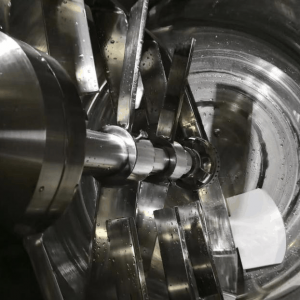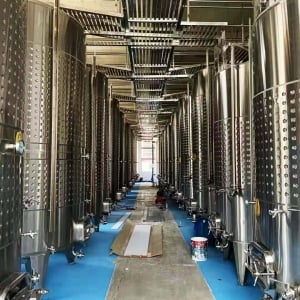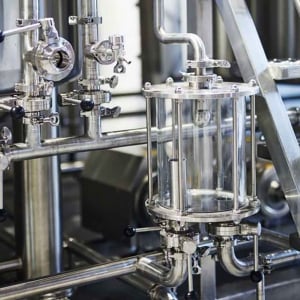Nano-Scale Brewing: Revolutionizing Craft Beer on a Micro Level
Nano-scale brewing is transforming the craft beer industry, providing microbreweries, home brewers, and small businesses with efficient ways to create high-quality beer in smaller batches. Whether you’re a brewing enthusiast, an aspiring entrepreneur, or an expert in the beer production industry, nano-brewing opens up exciting opportunities for innovation, cost-efficiency, and experimentation.
But what makes nano-brewing stand out from traditional brewing methods? How can you ensure success while navigating the process? Grab a pint (or coffee, if you prefer), and let’s deep dive into the world of nano-scale brewing with insights, detailed comparisons, practical tips, and everything you need to know.
Overview of Nano-Scale Brewing
Nano-scale brewing refers to producing beer in extremely small batches, typically using a brewing system with a capacity ranging from 1 barrel (31 gallons) to 3 barrels (93 gallons). This allows brewers to test new recipes, experiment with unique flavors, and serve hyper-local beer to a dedicated market.
- Who is it for? Small craft brewers, startups, homebrewers scaling up, and restaurants or pubs looking to produce exclusive in-house beers.
- Why does it matter? Nano-brewing lowers initial investment costs, offers flexibility, and fosters creativity, enabling brewers to innovate without excessive risk.
Nano-scale brewing bridges the gap between hobbyist homebrewing and full-fledged microbreweries. It’s the sweet spot where passion meets practicality.

Troubleshooting Common Issues with Nano-Brewing Systems
Brewing beer, even on a small scale, isn’t without its hiccups. Here’s a breakdown of some common issues nano-brewers encounter and how to address them effectively:
1. Fermentation Challenges
- Problem: Stuck fermentation (when yeast stops working too early).
- Solution: Check temperature consistency. Ensure proper yeast pitching rates and oxygenation during the fermentation process. Use fresh yeast and confirm its viability before brewing.
2. Scaling Recipe Accuracy
- Problem: Ingredients don’t scale linearly, leading to inconsistent flavor.
- Solution: Adjust recipes carefully, especially hops and specialty grains. Use brewing software for precise calculations tailored to nano-batch sizes.
3. Cleaning and Sanitation Issues
- Problem: Inadequate cleaning leading to contamination.
- Solution: Prioritize sanitizing all equipment thoroughly before each brew. Invest in a small CIP (Clean-In-Place) system for tanks and fermenters to ensure hygiene.
4. Limited Equipment Efficiency
- Problem: Heat loss or inefficient chilling in small tanks.
- Solution: Insulate vessels well and use appropriately sized chillers to maintain temperature control during brewing.
5. Clogged Filters and Valves
- Problem: Smaller systems are prone to blockage from grain husks or hops.
- Solution: Use fine mesh filters and sparge carefully to avoid grains entering the system.
Navigating these hurdles will help you master nano-scale brewing, ensuring smooth operations and great beer every time.
The Nano-Scale Brewing Process: From Grain to Glass
The process of nano-brewing largely mirrors traditional brewing but on a smaller, more precise scale. Here’s a step-by-step look at what goes into crafting beer in nano-batch systems:
- Mashing:
Brewers heat crushed malted grains in water to activate enzymes that convert starches into fermentable sugars. Maintaining the correct temperature (around 150°F) is crucial for consistency. - Lautering:
The sweet liquid (wort) is separated from the grains. In nano-systems, smaller false bottoms and filters prevent grain bits from passing through. - Boiling:
The wort is boiled, and hops are added to provide bitterness, aroma, and flavor. Since the system is small, precise hop additions are critical to avoid overpowering the beer. - Cooling:
The wort must be quickly cooled to pitching temperatures (65°F–70°F for ales). Nano-brewing systems often use compact plate chillers or immersion chillers. - Fermentation:
Yeast is added, converting sugars into alcohol and CO₂. Nano-systems require strict temperature control and oxygenation during this phase. - Conditioning and Packaging:
The beer matures and develops flavors over a few weeks. It is then carbonated and packaged in kegs, bottles, or cans—perfect for local distribution.
By following these steps, nano-brewers can create top-quality beer with full control over every detail of the process.
Nano-Brewing Equipment: Capacity, Space, Design, and Customization
When choosing nano-scale brewing equipment, several factors play a role in determining the right system. Here’s a comprehensive comparison:
| Feature | Details |
|---|---|
| Capacity | Ranges from 1 BBL (31 gallons) to 3 BBL (93 gallons). Ideal for small-batch experimentation and limited production runs. |
| Space Requirements | Compact systems are suitable for small commercial kitchens, basements, or garages. Requires approximately 200–500 sq. ft. for the full setup. |
| Design | Modular and customizable. Includes mash tuns, brew kettles, fermenters, pumps, and chillers designed for easy integration in tight spaces. |
| Customization | Brewers can add automated controls, CIP systems, and advanced temperature management tools to streamline production. |
This modularity and flexibility make nano-brewing perfect for small businesses or personal brewing spaces.
Top Nano-Brewing Equipment Suppliers and Price Ranges
Choosing the right supplier is key to ensuring reliability and quality in your nano-brewing system. Below is a comparison of leading suppliers, their product offerings, and estimated price ranges:
| Supplier | Product Offerings | Price Range |
|---|---|---|
| Blichmann Engineering | Small-batch brewing systems, fermenters | $5,000–$25,000 |
| Ss Brewtech | Compact turnkey nano-brewing systems | $7,000–$30,000 |
| Stout Tanks | Customizable stainless steel brewing equipment | $10,000–$35,000 |
| Spike Brewing | Affordable, high-quality brewing tanks | $4,500–$20,000 |
| PicoBrew | Advanced automated home/nano systems | $2,000–$8,000 |
These suppliers offer a wide range of options to suit different budgets, production goals, and space constraints.
Installation, Operation, and Maintenance of Nano-Brewing Systems
Ensuring smooth installation and operation is vital for long-term success. Here’s how to approach it:
| Aspect | Details |
|---|---|
| Installation | Requires minimal plumbing and electrical work. Compact designs allow systems to fit small spaces. |
| Operation | User-friendly interfaces with manual or automated controls simplify brewing processes. |
| Maintenance | Regular cleaning (CIP systems recommended), sanitization, and periodic inspections to prevent contamination or wear. |
By following these practices, you can maximize equipment lifespan and keep your nano-brewing operations running efficiently.
Choosing the Right Nano-Brewing Supplier
Selecting a supplier involves evaluating several factors. Here’s a helpful guide:
| Criteria | Considerations |
|---|---|
| Reputation | Look for reviews, ratings, and client feedback. Opt for established brands known for quality. |
| Customization Options | Ensure systems can be tailored to your production scale and process. |
| Price vs. Value | Compare price ranges against features offered. Balance affordability with long-term quality. |
| Customer Support | Suppliers offering warranties, after-sales support, and maintenance assistance add significant value. |
| Lead Time | Check manufacturing and delivery times to avoid production delays. |
Doing your research upfront ensures you find the best partner for your brewing needs.
Pros and Cons of Nano-Scale Brewing Systems
| Pros | Cons |
|---|---|
| Lower upfront costs compared to microbreweries. | Limited production capacity may restrict growth. |
| Ideal for experimentation with recipes and flavors. | Higher per-unit production costs for small batches. |
| Flexible setup requiring less space. | Requires attention to detail for scaling up recipes accurately. |
| Perfect for niche, local markets or in-house brewery options. | Equipment maintenance can be labor-intensive for frequent small batches. |
Nano-brewing offers incredible opportunities but requires planning to address its limitations effectively.

FAQs
| Question | Answer |
|---|---|
| What is nano-scale brewing? | It’s small-batch brewing with systems producing 1–3 barrels per batch, ideal for innovation. |
| How much does a nano-brewing system cost? | Costs range from $5,000 to $35,000, depending on features, capacity, and customization. |
| Can nano-brewing be profitable? | Yes, when serving niche markets, direct-to-customer sales, and premium craft beer markets. |
| What’s the space requirement for nano-brewing? | Typically 200–500 sq. ft., making it suitable for small commercial kitchens or garages. |
| Is nano-brewing hard to maintain? | Regular cleaning and sanitization ensure smooth operations. CIP systems simplify maintenance. |
Conclusion
Nano-scale brewing isn’t just about making beer; it’s about crafting unique experiences. It empowers small-scale brewers to innovate, create, and thrive in an ever-growing craft beer industry. By choosing the right equipment, maintaining operations meticulously, and tackling common challenges, you can turn your passion into a profitable venture.
Ready to dive into the world of nano-brewing? Start small, dream big, and pour yourself a glass of success—one batch at a time.












